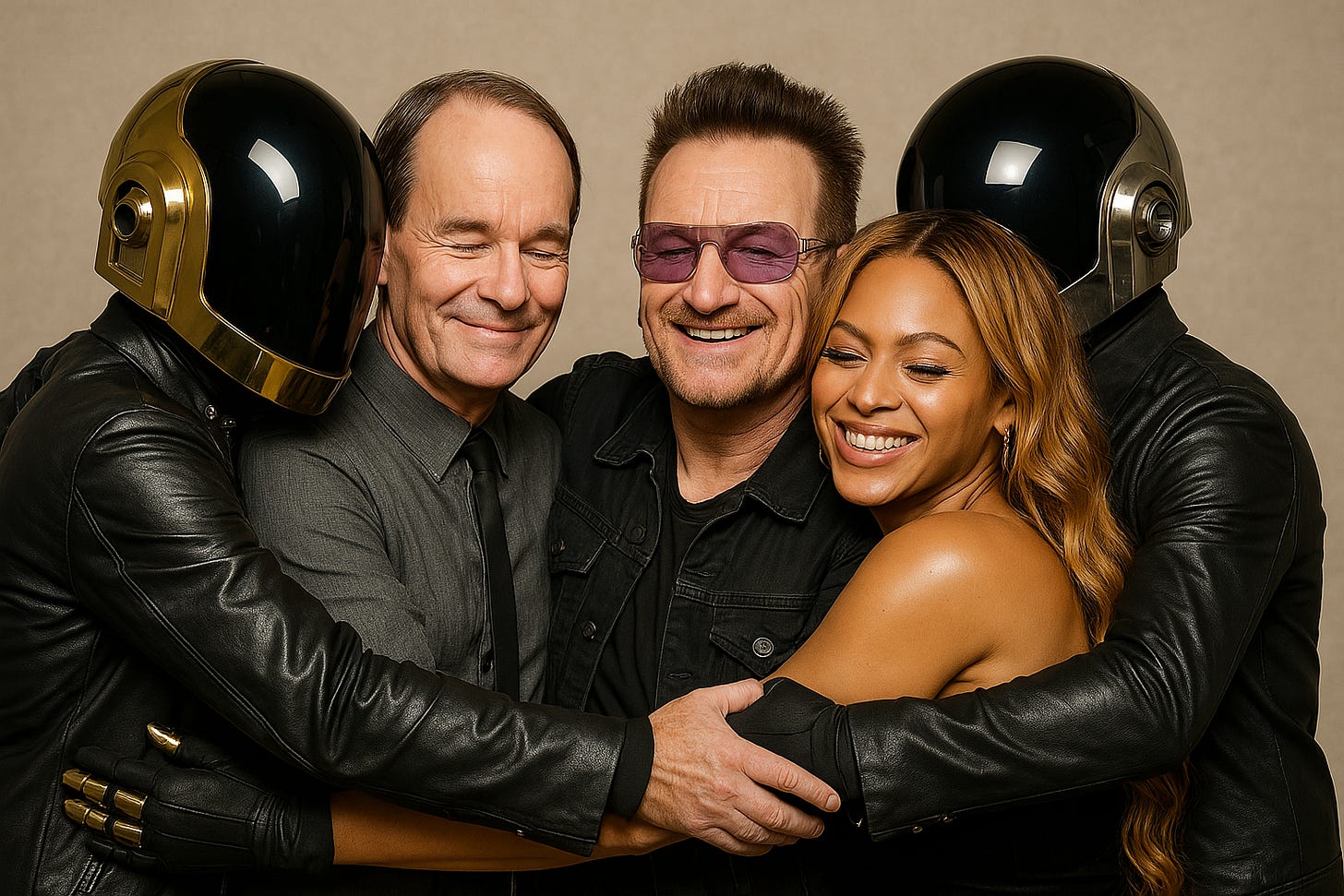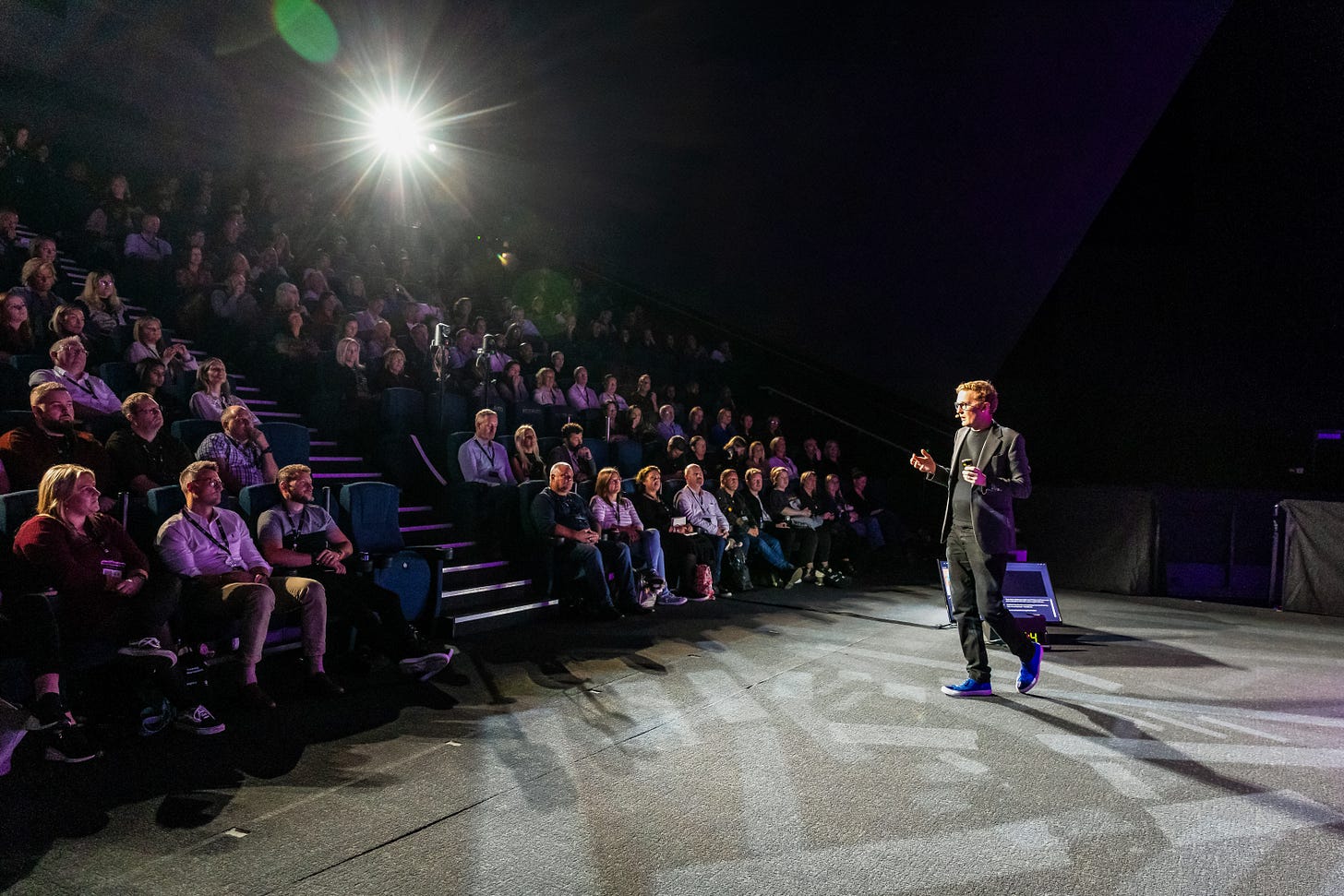Beyond the moral & professional panic over AI images
⏩ Non-obvious visions of creativity in the future normal
Unless you have been on a digital detox over the last week, you will have seen your feeds being overwhelmed by images created by Open AI’s new 4o image generator.
It was another ‘ChatGPT moment’, where the world woke up to how far AI has come, and how fast. Perhaps even more so, given how accessible and impactful images are. They stop your scroll in a way that’s harder for text to do.
But as well as excitement over the creative possibilities, there was plenty of soul searching and nervousness, at least if the WhatsApp groups that I’m part of are any indication. What does it mean for copyright and trust? What does it mean for creativity? What does this mean for our, and our children’s, jobs?
Hammers, Hammers Everywhere: when every idea looks visual
I’m not going to dive too deep into all the potential immediate use cases here, as there are countless posts doing this.
Undoubtedly, digital marketing – especially ephemeral social media ads – will become infinitely AI-generated and optimised. But there will be also countless novel applications. As Ethan Mollick rounds up, “visual recipes, homepages, textures for video games, illustrated poems, unhinged monologues, photo improvements, and visual adventure games, to name just a few.”
One particularly impressive use case (for me, at least!) is the ability to turn written content into quickly accessible visual explainers. Here’s a summary of some ideas around Augmented Creativity I wrote last year. This wasn’t remotely possible at the start of last week:

But regular readers will know that we try to dig a little deeper, looking beyond today’s immediate use cases in order to explore the non-obvious implications of democratising visual creativity:
Ready? Let’s go…
1. Creativity as a vibe


Yes, I’m jumping on the vibe bandwagon. But this is just a re-branding of the drum I’ve been beating for the past 18 months. As I wrote back in November 2023 (yes, a lifetime ago):
AI is fundamentally changing people’s creative experiences. Drop in a rough sketch and it is transformed into a beautiful, high fidelity image in seconds. Even people who think they ‘aren’t creative’, are now.
What’s really interesting about this is not just the output itself, but about how it changes people’s expectations. Suddenly a huge mental barrier has been removed. People can try things. The gap between ideas and reality has collapsed.
First, this should remind you that no matter how exponential things get, if you focus your insights on core human truths then they’ll remain relevant.
Second, and this is where it gets practical – as an organisation you should harness this newfound energy in order to unlock Crowd-Powered Creativity.
Back to 2023:
Crowdsourcing isn’t a new trend by any stretch, but AI will breathe new life into it, as it lowers the time and effort required to contribute and improves people’s outputs (crucial for encouraging others to get onboard!).
Carve out a day, or better yet, a couple of days, and run a company wide AI-powered innovation sprint to experience how AI empowers and motivates people.
If your last employee innovation initiative asked people to enter their ideas into a Google form, then the leap to seeing suggestions come to life with rich and realistic AI-generated product images, complete with professional-sounding press releases and detailed customer personas, is like the jump from black and white print to colour TV, or from simple text tweets to Instagram’s AR lens-enhanced Reels.
The only update I’d make this to in 2025 is my now-laughable naivety that you might need to carve out a day (or longer!). You can now do this in 30 minutes, or perhaps 3 hours if you want your team to go deeper.
Now is a good time to flag that I’ve developed a tool to do just this. VisuAIse Futures turns your next meeting or event into a live, interactive, ‘multiplayer’ shared experience, using AI to crowdsource insights from audiences ranging from 50-500+ people, all in a keynote time-slot.
And yes, there were a lot of buzzwords in that last paragraph ;)
2. The Creativity Paradox
Yet there’s a catch. And it’s one that you’ve probably experienced over the last few days. The first photo you see transformed into a Studio Ghibli-style image is magical. By the 100th, it starts to become wallpaper. As I wrote just last week:
“People are highly attuned to assessing value … Whenever we make something easy and abundant, we devalue it.”
And while the right input and prompts can lead to genuine creativity, the risk with these easily-accessible tools is it’s very easy to slip into derivative thinking.
Just one small but telling example. Inspired by seeing a similar post, I gave ChatGPT my LinkedIn profile and asked it to create an action figure model of me. Completely independently, so did a friend of mine. Admittedly he’s a digital strategist, but do you notice anything about our figures?
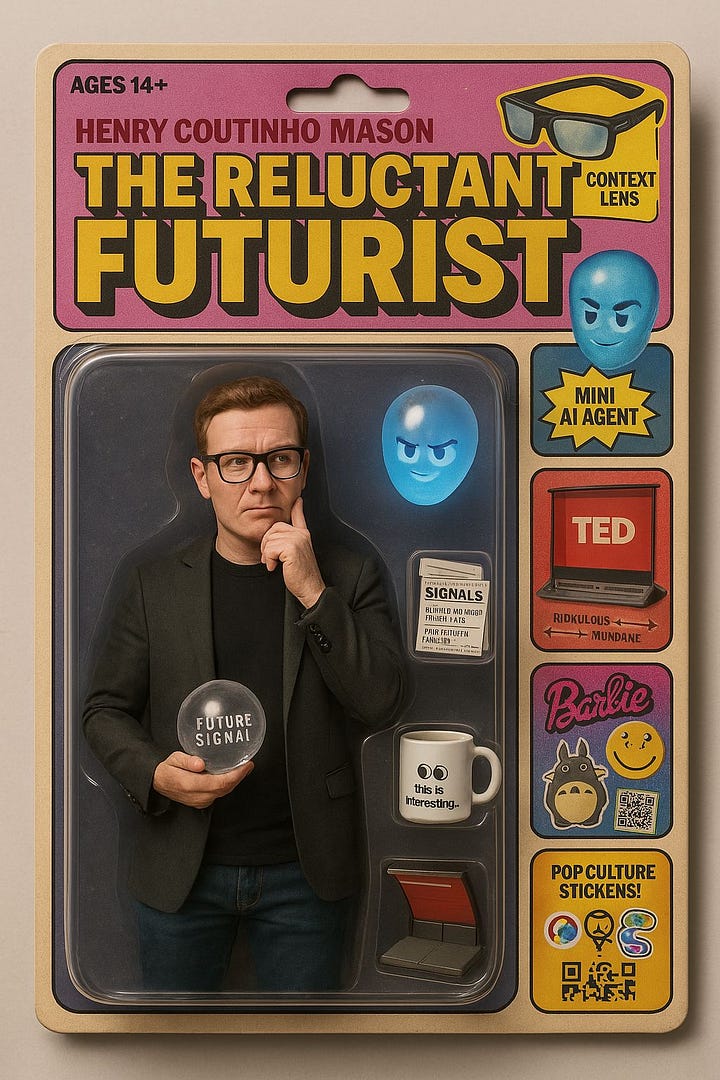

This isn’t the first time I’ve experienced this. Google’s viral NotebookLM AI-generated podcasts took the internet by storm last year, deservedly so. But as I experimented with using them to summarise the output of my workshops, I quickly started to notice they followed a very consistent formula. I’m not saying these issues can’t and won’t be solved. But it will take work – and creativity! – to generate interesting output.
3. Artists will art
This is why I don’t buy the most apocalyptic predictions about how this will ‘kill’ a host of visual professions, from graphic designers to artists.
First, my non-obvious prediction is that the gap between ‘professional’ creators and amateurs will actually widen, as people with great taste use these AI tools to create ever more novel, scroll-stopping visuals.
Second, on a macro level, the new rarely kills the old. Photography democratised capturing visual memories, but didn’t displace artists. It changed and expanded the art world. The synthesiser and programs like Garage Band made it possible for people who couldn’t play instruments to make music in their bedrooms. But while Kraftwerk helped spawn thousands of niche electronic music genres, they didn’t kill guitar bands.
Indeed, choosing ‘human-generated’ (whatever that means) art will become a statement. No one has to run a marathon today. But millions do because it sends a signal that they prioritise their fitness. In the future normal, no one will have to learn a language. But they will, because doing so shows you respect the people you are talking to. Similarly, many brands will continue to work with human creatives because of the stories they bring, and the stories that their work allows their customers to tell.
4. Human collaboration as creative advantage
The other drum that I’ll continue to beat relentlessly is that in an age of instant abundance, human connection is only going to get more valuable, not less so.
That’s true when it comes to using AI to do your best thinking, but here I’m talking about distribution. Because if an image is generated and no one sees it, does it have any impact?
Of course, focusing on distribution isn’t a new idea. Herbert Simon saw this decades ago when he observed that "a wealth of information creates a poverty of attention." But when everyone can create beautiful images on demand, the real question becomes: who will care enough to look?
The best creatives will recognise that their audience is their edge, and so focus as much on who they create with as much as what they create. Remix culture is about to get turbocharged.
5. Trust as a creative imperative
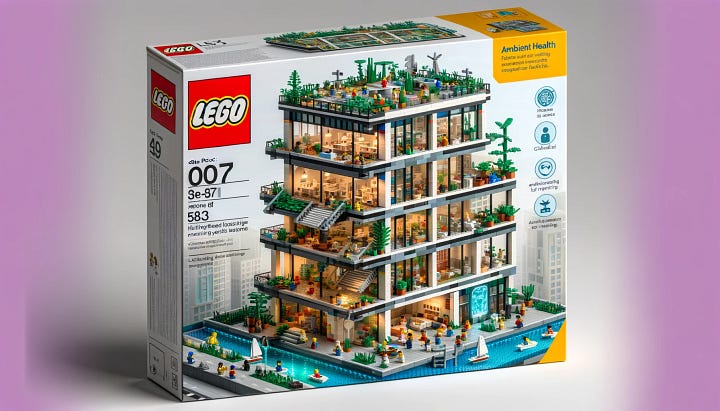

There are technical ways to bring trust and transparency to the world of AI generated images, such as content credentials. But there’s a human answer too. Simply put, people’s decisions whether to trust an image will be based on their perception of the person or organisation that shared it. That’s why the April Fools’ joke myself and Rohit created last year (the LEGO set above) was ‘good enough’ to look real as people absent-mindedly scrolled through their feeds.1 But as AI-generated images get completely indistinguishable from ‘real’ ones, creators will have to be transparent in order to keep their audience’s trust. This doesn’t mean don’t use AI; it means use it well.
One other non-obvious insight I’ve noticed is that Open AI has clearly decided that the celebrity deepfake conversation is over. In two years, we’ve gone from the Pope’s puffer jacket making global headlines to images of President Trump smoking a bong being completely unremarkable. The future, made normal.
Two quick thoughts on this:
First, Open AI share my view that ‘invisible deepfakes’ pose a greater threat than celebrity ones, because they are less likely to get exposed. So while I was able to generate the parody image above, I can’t take a picture of my family and transport us to places we’ve not been (at least, not using ChatGPT).
Second, this opens up a fascinating new status frontier, where if people can make unrestricted images of you then it’s a sign that you've made it. It’s the Twitter blue tick for the generative AI generation.
We’re just getting started…
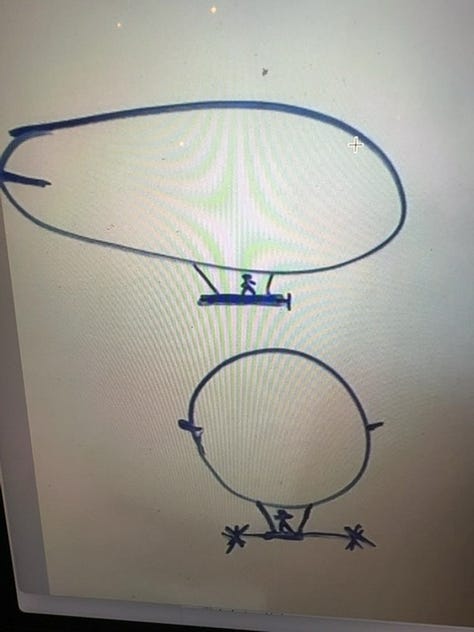
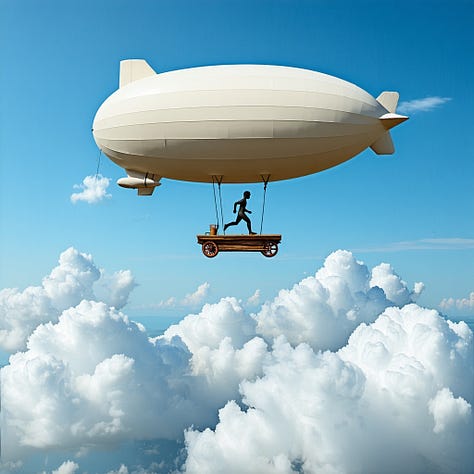

This is still an incredibly nascent space, and we’re all figuring out what it means. A few more quick observations:
We need better UX. Just as Deep Research’s clarifying questions help steer and improve its output, we’ll see interfaces that help people generate ‘better’ outputs, with less knowledge, like Google Whisk.
Beyond images. We’re seeing the power of combining text and images. Imagine what happens when we can extend this to audio, video and even interactive experiences.
From single player to multiplayer. One learning from my experiences with VisuAIse Futures is that there’s another level of magic that’s unlocked when you turn creativity into an instant, live, shared experience.
Ride the exponential wave. This should be a powerful slap in the face to remind you that AI isn't slowing down. Make sure you’re building something that delivers better results as AI gets more powerful.
When is it now ‘too good’? Having said this, I was curious to revisit the first prompt I used to test my VisuAIse Futures concept almost exactly a year ago. It wasn’t what I expected at all… 😂
Next: Inspire your team to thrive in the future normal
In the last 12 months I’ve delivered 30+ sessions, both live and virtually – from Brazil to Saudi Arabia, Las Vegas to London.
My regular trend & innovation keynotes bring fresh, cross-industry, people-first perspectives to your audience.
VisuAIse Futures takes it one step further, turning a keynote into an interactive, ‘multiplayer’ creative experience that gets your team excited at how they can use AI to accelerate your innovation culture.
Here’s what people are saying about it:
“It was so refreshing to hear how AI can be used to power human imagination, rather than replace it. And then it was even better to actually experience it”
“Fantastic session! Hugely insightful and fun, too!”
“Brilliant. The feeling in the room was positively intense whilst the images were coming through!
Feel the optimistic vibes it will bring to your event in the 2-minute video below (or watch it here).
If you’d like to discuss bringing me to your next meeting or event then please do reach out directly to Renee Strom or check out my speaking site.
Thanks for reading,
Henry
Read my mea culpa here, which (unsurprisingly), also discussed crowd-powered creativity





